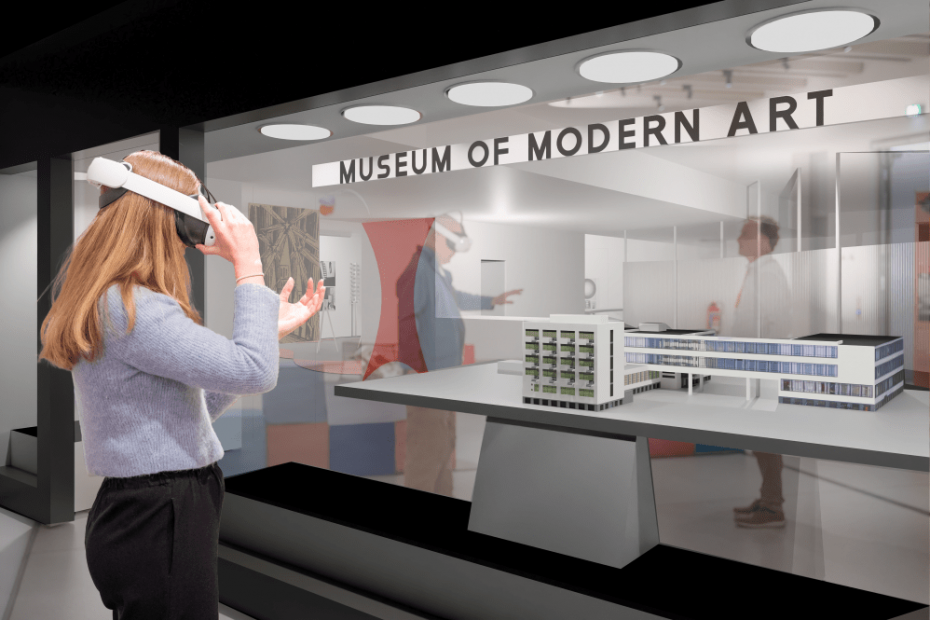Have you ever wanted to be immersed in a legendary historic design event?
As a followup to yesterday’s Daily Heller about Bauhaus und Nationalsozialismus, thanks to co-curator and design historian Patrick Rössler I’ve learned that the Klassik Stiftung Weimar is also offering visitors a virtual reality walkthrough recreation of MoMA’s 1938 landmark exhibition Bauhaus 1919–1928. This was the legendary show organized by MoMA’s founding director, Alfred H. Barr Jr., which took place in the U.S. despite the Nazi assumption of power in 1933 and the draconian restrictions against Modern (or “degenerate”) art and design that forced the Bauhaus in Berlin to shutter. For a long time, reprints of the illustrated catalogs were the definitive publications on the Bauhaus. “Today, the latest digital technology enables a virtual resurrection of the exhibition,” say its organizers, “which visitors can experience for themselves with VR glasses.” In addition to Bauhaus und Nationalsozialismus, Rössler has helped bring an 86-year-old landmark virtually back to life.
One can only speculate how Barr would have use this enhanced technology to introduce visitors to the progressive art and design movements he was excited to find erupting throughout Europe in the 1920s and early 1930s. Barr organized exhibitions at the fledgling MoMA promoting Gesemtkunstwerk and made the study of design and architecture equivalent to painting and sculpture. His first exhibit was the eye-opening Machine Art (1934) exhibit, which elevated industry to the Olympus of applied design. Meanwhile, Barr was impressed by the paradigm-shifts coming from the Bauhaus, which he visited in 1927. He later invited Walter Gropius, the school’s founding director, to curate Bauhaus: 1919–1928, collaborating with the former Bauhaus student, teacher and graphic designer Herbert Bayer.
Bayer had honed his Bauhasian visual language—”a new relationship between artifact, viewer and environment”—with Gropius and László Moholy-Nagy when they worked on the Section Allemande exhibition at the Salon des Société des Artistes Décorateurs in Paris in 1930. Bauhaus: 1919–1928 featured Bayer’s inventive exhibition design showcasing 700 Bauhaus works in a challenging venue—the temporary MoMA exhibition space at Rockefeller Center—with low ceilings and multiple small rooms. Bayer used abstract and pictorial graphics on walls and floors to guide visitors through the show.
